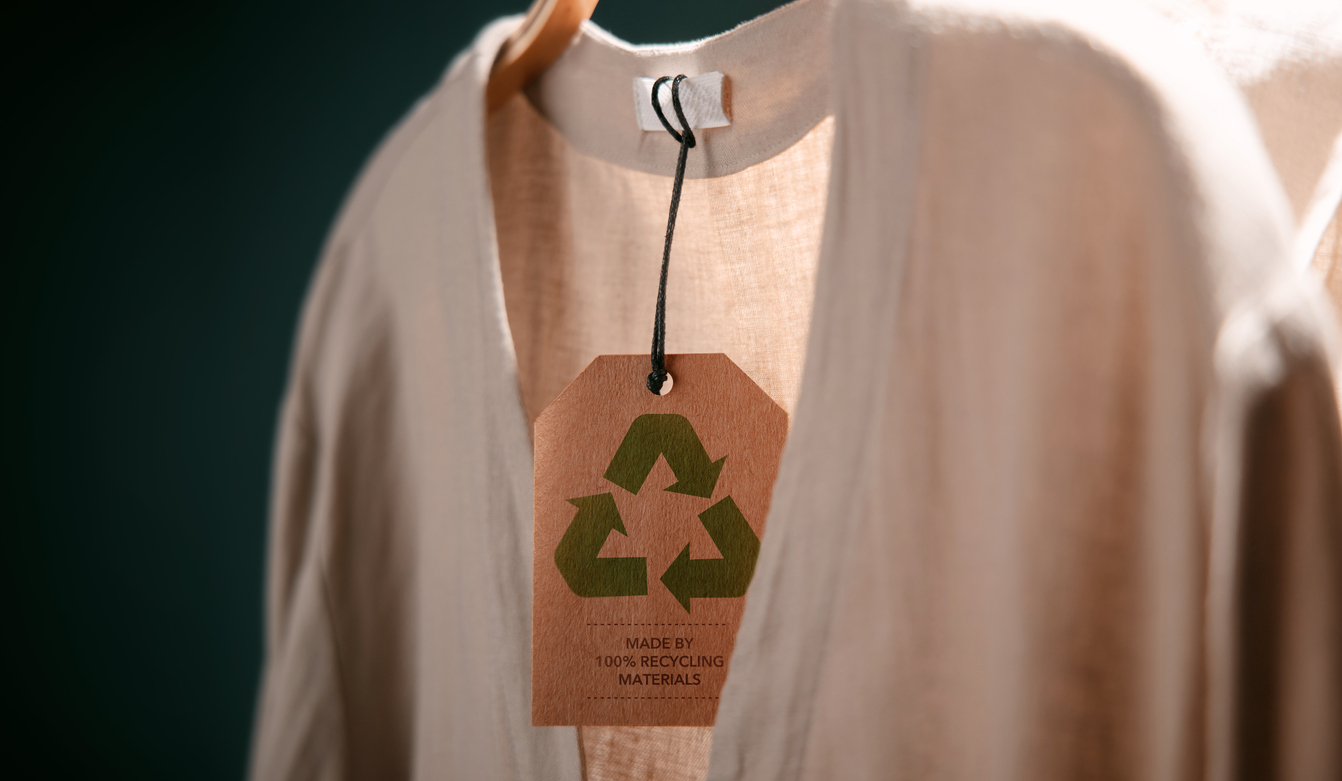Coaxing Sustainable Fashion Investors This Side of the Atlantic
The U.K. and Europe are leaders in sustainable fashion investment. Can acquirers across the pond jump into the growing opportunity?

Late last year, images of burning piles of clothing waste in Chile, totaling tens of thousands of tons, caught the public’s attention and raised awareness to the consequences of fast fashion’s monumental rise. Environmental groups say the mounds of discarded clothes represent a troubling trend: researchers found the average number of times a garment is worn has dropped by 36% in 15 years.
Clothing waste is far from the only sustainability challenge facing the fashion sector, and the numbers are stark: fashion is the world’s second-largest consumer of water, with textile dyeing the second-largest water polluter.
The International Union for Conservation of Nature estimates more than one-third of all microplastics in the ocean can be traced to the laundering of synthetic textiles. And these statistics don’t begin to touch on a variety of social issues around child labor, fair wages and safe working conditions also troubling the industry.
With so many points along the fashion supply chain and product lifecycle in need of improvement from an ESG standpoint, new businesses are emerging to tackle any number of challenges. For investors, an opportunity is on the horizon, experts say, as some of the biggest brands in fashion and cutting-edge innovators drive progress—and profits.
Investor Interest Beyond the U.S.
Venture capital, private equity and strategic investors have already proven active in the sustainable fashion realm thanks to a highly diverse and fragmented pool of potential investment targets. The data within middle-market search engine Grata reveals 3,281 businesses operating in the sustainable fashion space globally, and nearly all—3,166—are either bootstrapped or venture capital-backed.
Such a high volume of sustainable fashion players reflects the large number of sustainability pain points innovators that exist in the sector. Michael Kleindl, managing partner at Collateral Good, a climate-first venture capital firm based in Switzerland, says the data is “shockingly bad,” noting that the fashion industry is responsible for up to 10% of global greenhouse gasses; about half of all fashion products produced end in a landfill, and less than 1% gets recycled.
“The great news,” he says, “is that we are observing an acceleration of technology startups who can bring true innovation and transform the industry.”
Collateral Good is quick to embrace those innovators, having recently launched its Collateral Good Ventures Fashion I, its first fashion-focused fund focused on sustainability within the fashion supply chain and the materials that pass through it. That means seeking out materials that can be recycled, lab-grown or bio-based, and identifying points in the production process to reduce water, energy and chemical usage. Already, Kleindl says, the fund has captured significant attention from hundreds of innovators submitting investment proposals. Fashion giant Hugo Boss became the first to invest in the fund, announced last December.
Related content: Carve-Outs Bring Optimism to Consumer M&A
Other recent investment activity in the industry has remained focus outside of the U.S. Navis Capital Partners invested in Saitex Holdings in 2018, backing the Vietnam-based jeans supplier in its efforts to modernize denim manufacturing with sustainable practices (the company opened its latest sustainable fabric mill in 2022). Also in 2022, Goldman Sachs’ asset management arm led a $100 million investment in Recover Textile Systems, a Spain-based business that turns textile waste into recycled cotton fibers. The investment valued the company at $1.1 billion.
Of the 3,281 sustainable fashion businesses found within Grata’s database, only nine are currently backed by private equity sponsors. They include Los Angeles-based sustainable fashion brand Reformation, which secured funding from U.K.-based global investment firm Permira. More recently, Italy-based Kampos, a sustainable swimwear brand, sold a 35% stake in the company to investors including MEGA Holding, Cherry Bay Capital Group and Pambianco Invest Club, according to reports released earlier this month.
“Private equity’s presence in the market has been muted thus far, however, particularly in the U.S. there is a perceived higher consciousness for the environment and sustainability in Europe,” says Kleindl.
Growth Beyond Funding
Even amid a tough investment and macroeconomic environment, sustainable fashion startups continue to find avenues to growth without the help of outside capital—including those operating in the U.S.
One of them is sustainable e-commerce marketplace Wearwell, based in Philadelphia. The company is tackling multiple ESG pain points within the fashion sector, offering clothing, accessories and home goods from brands vetted for their sustainability and ethical business practices.
There’s a wide-open opportunity for investors to get in on this space before it continues to grow in the next phase of economic recovery. We’re ready for that.
Erin Houston
Wearwell
Having initially launched as a subscription service, Wearwell pivoted its business model and expanded its offering to broaden its consumer reach. The company transitioned into a C Corp in 2020 and operates with a core staff of three to limit overhead. Wearwell has managed to raise $1.4 million to-date via seed and pre-seed funding, as well as a crowd equity campaign, “which was a really wonderful way for us to attract new customers,” Houston notes.
But market headwinds have forced the business to turn its attention away from fundraising efforts for the time being. “It’s a tough consumer market right now, and because of that the investment community is a lot less bullish than it used to be on consumer-facing businesses,” says Houston. “We’ve seen slow M&A over the past year, of course…We’ve got enough runway, we’re able to continue growing and moving forward because we’re covering our costs, but we’re not growing at the pace that we would like to, and it’s really just due to a lack of availability of funding.”
For now, Wearwell’s growth efforts are instead focused on brand partnerships—a strategy Houston says is key for the entire sector. “The sustainable fashion industry overall is a lot more focused on partnership than any other industry I’ve been a part of before,” she says. “We’re really looking at it as: this is how we can all grow together, because it is an emerging market.”
Brand partnerships have helped the platform expand despite a challenging time for the consumer goods space—amid other business hurdles. “We incorporated in 2020, and we all know what happened a couple of months later, having to navigate a global pandemic and supply chain issues,” Houston recounts. “There’s also an economic hangover I think we’re still experiencing.”
Related content: How Public Scrutiny of ESG Impacts Private Equity’s Investment Strategy
But she, like other founders and dealmakers, anticipate 2024 will be a year of fundraising recovery, and investors should be ready to act. “There’s a wide-open opportunity for investors to get in on this space before it continues to grow in the next phase of economic recovery,” she says. “We’re ready for that.”
Investors Shopping Around
For investors ready to jump into the sustainable fashion pool, Houston says they must be diligent in their sourcing efforts. Acquirers, just like consumers, are at risk of falling victim to greenwashing.
“One of the most important things for investors to be aware of is that consumers who are about this space really care,” says Houston. “They are sticklers. They see through greenwashing. From an investor perspective, it’s important to know that the investments you’re making are truly sustainable.” She advises would-be investors to get to know operators and understand their backgrounds and expertise in the world of sustainability.
Houston also highlights the opportunity for impact investors to go beyond the “E” in ESG with sustainable fashion. For Wearwell, promoting transparency and ethical practices within the fashion supply chain also extends to areas like fair wages, safe working conditions and support for women, which she says are instrumental to the success of the fashion landscape as a whole. “Eighty-five percent of garment workers are women,” she says. “If you can make sure they’re getting paid fairly, that makes a world of difference in their lives and in developing communities.”
The transformation of the planet towards a more sustainable and greener one, in our belief, is the biggest investment opportunity we have ever seen.
Michael Kleindl
Collateral Good Ventures
With so many touch points along the fashion supply chain and product lifecycle in desperate need of improvement from a sustainability standpoint, the potential for innovators to step in and move the needle is vast—creating a similarly broad landscape for investors to support those initiatives.
Houston warns investors not to sleep on the opportunity.
“This is the next chapter for fashion,” she says. “No one can deny we’ve seen a rise in fast fashion over the past decade, but the brands that are surviving and have staying power are the ones focused on sustainable fashion.”
For investors ready to reactivate, Kleindl agrees sustainable fashion is an attractive target. “The transformation of the planet towards a more sustainable and greener one, in our belief, is the biggest investment opportunity we have ever seen,” he says. “Bigger than the Internet, bigger than the first tech wave. It touches all industries. And why sustainable fashion is so interesting is, it’s a massive opportunity. There is massive change that needs to happen in this industry.”
Carolyn Vallejo is Middle Market Growth’s digital editor.
Middle Market Growth is produced by the Association for Corporate Growth. To learn more about the organization and how to become a member, visit www.acg.org.


